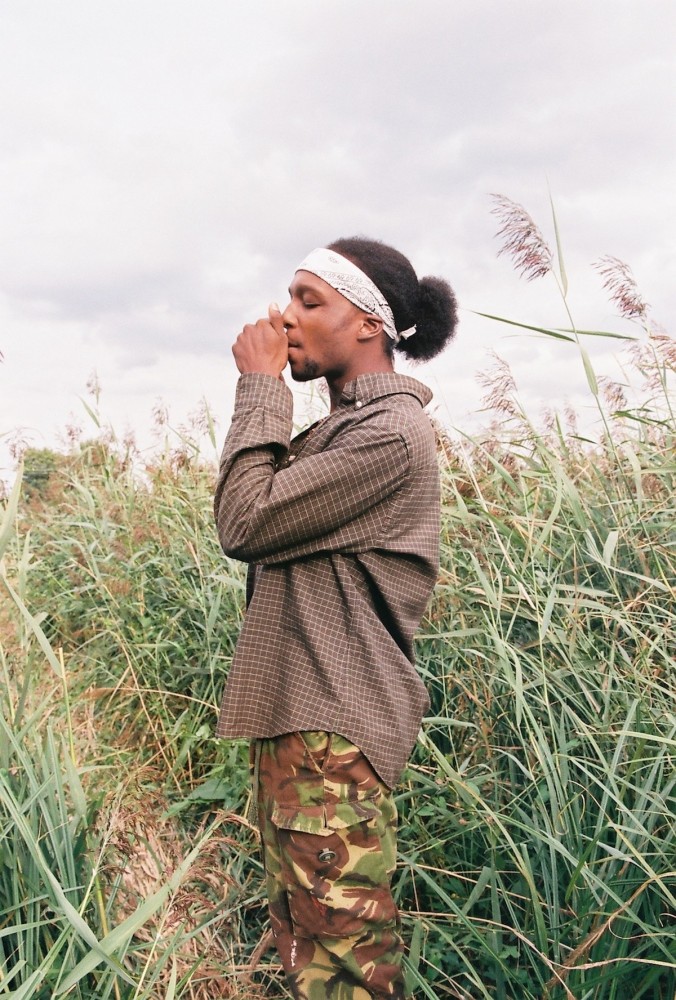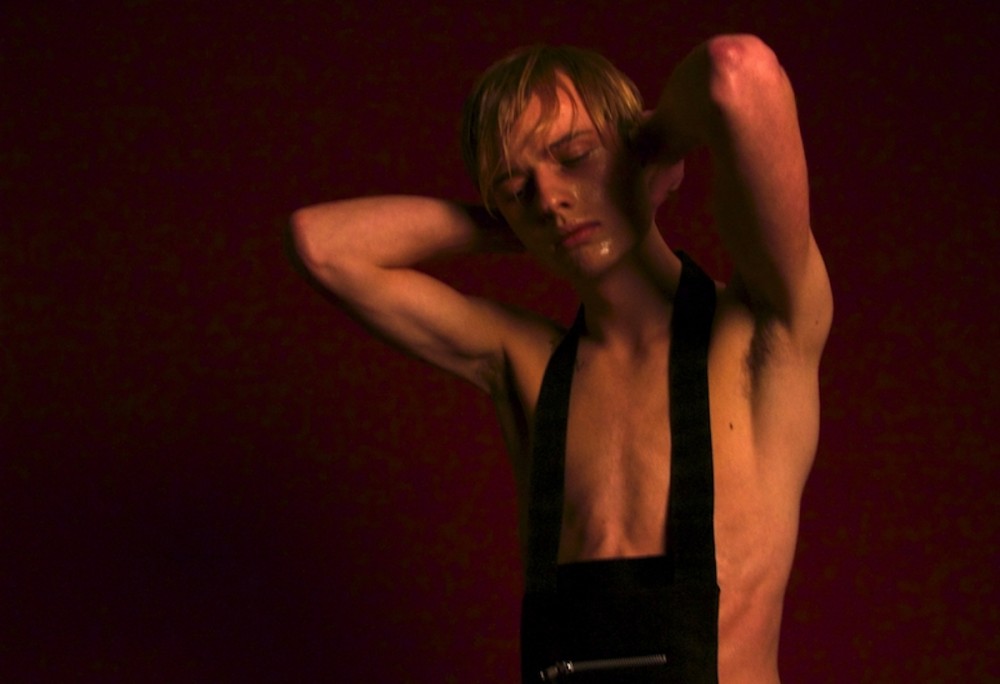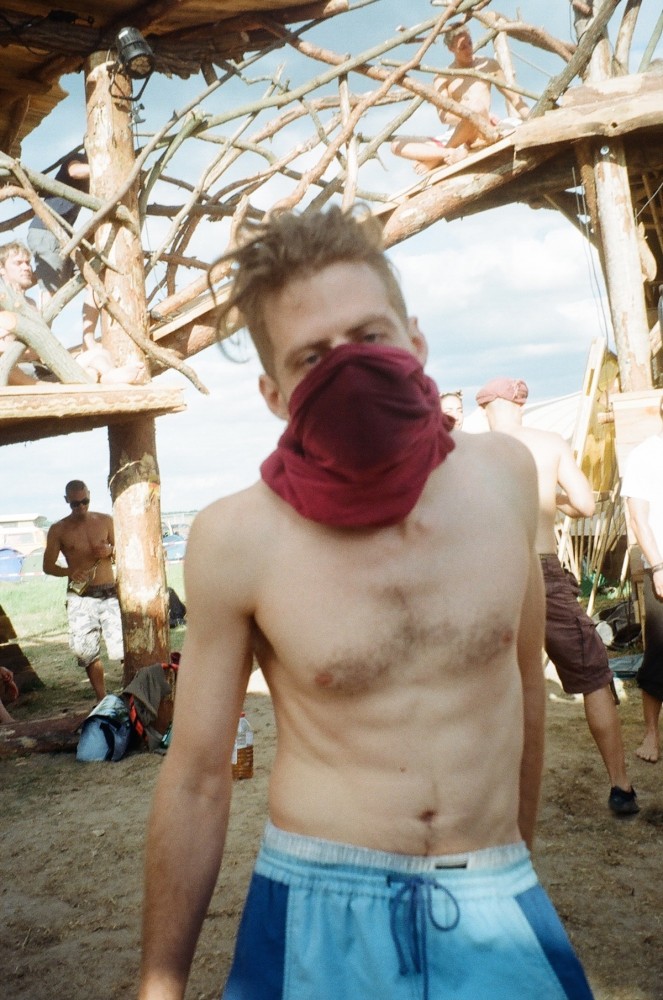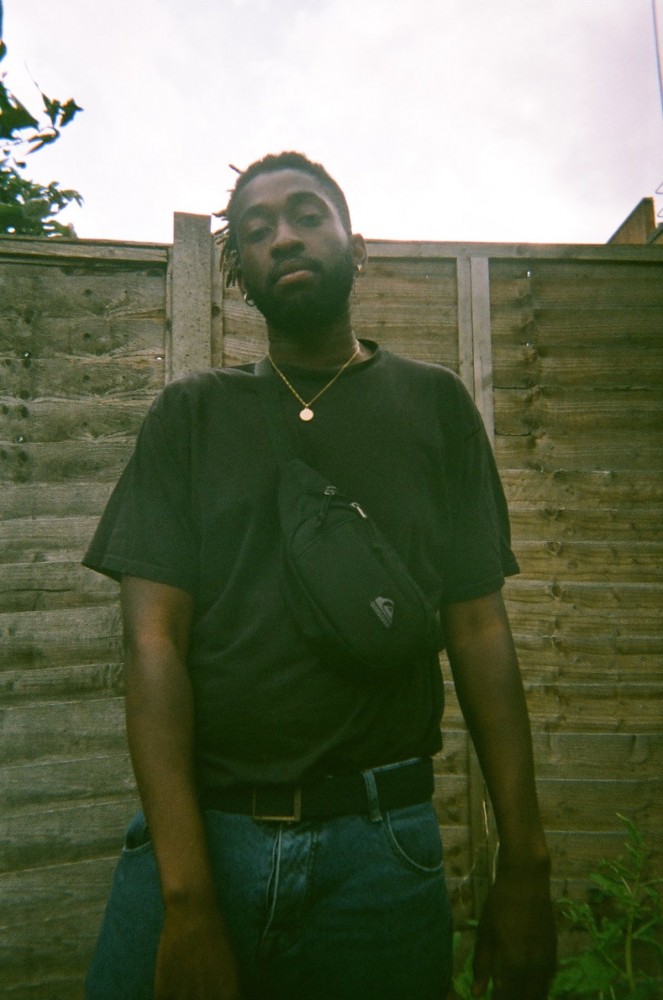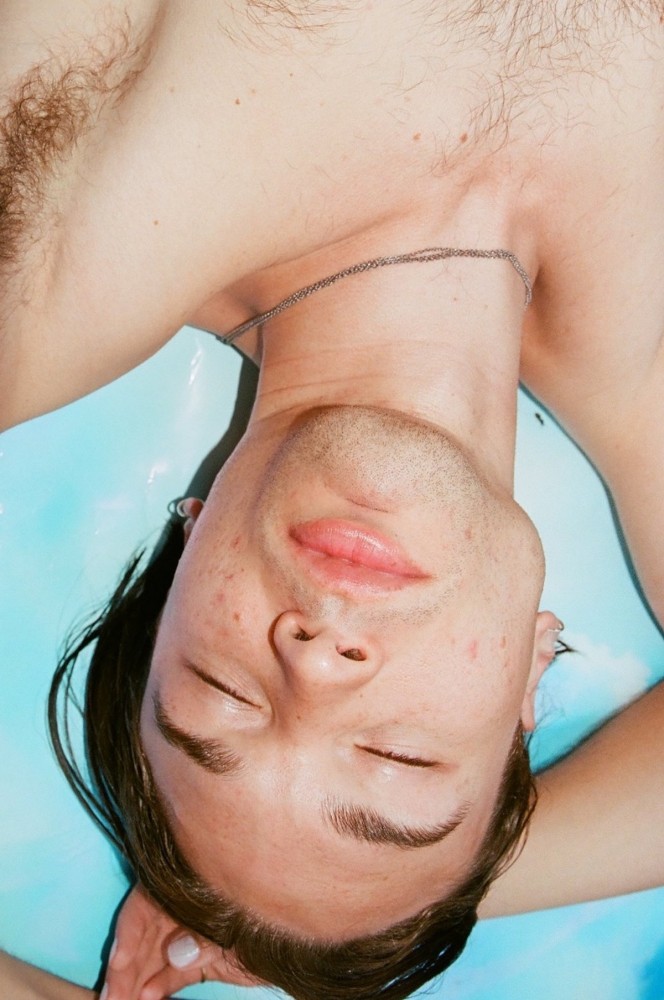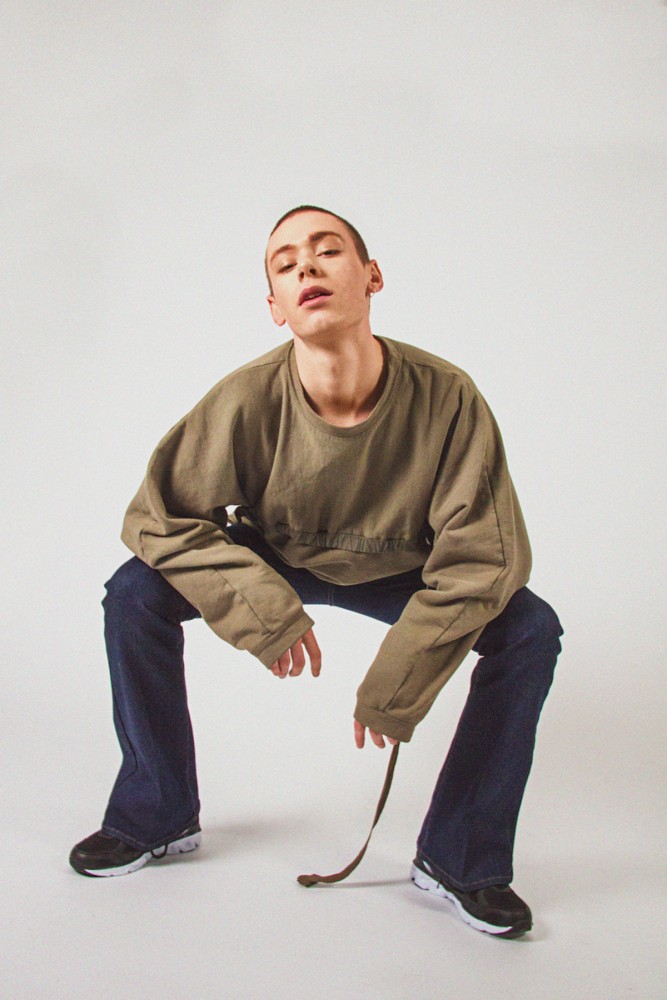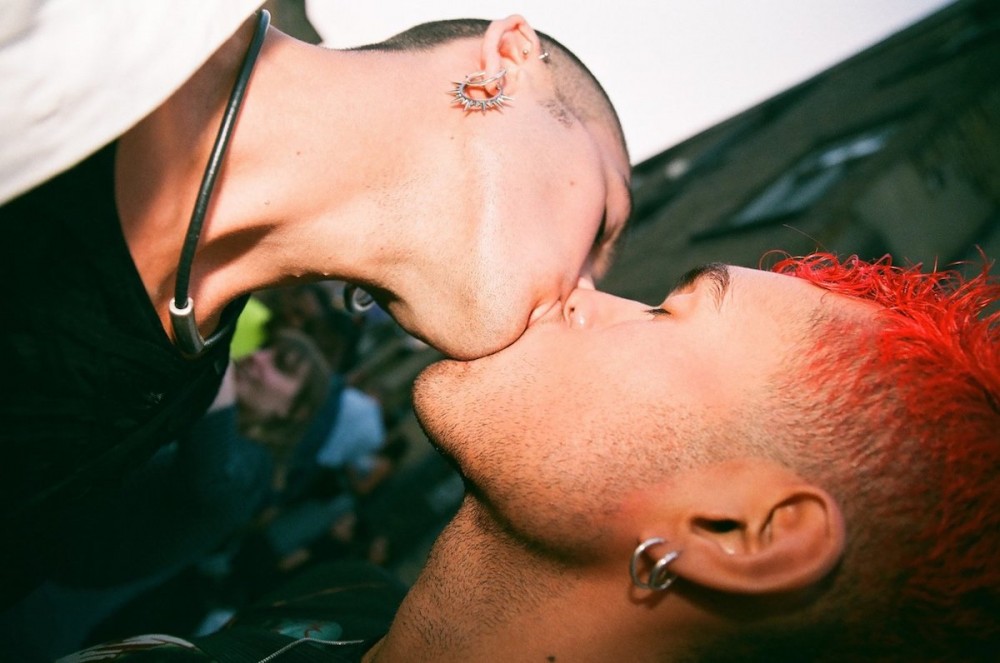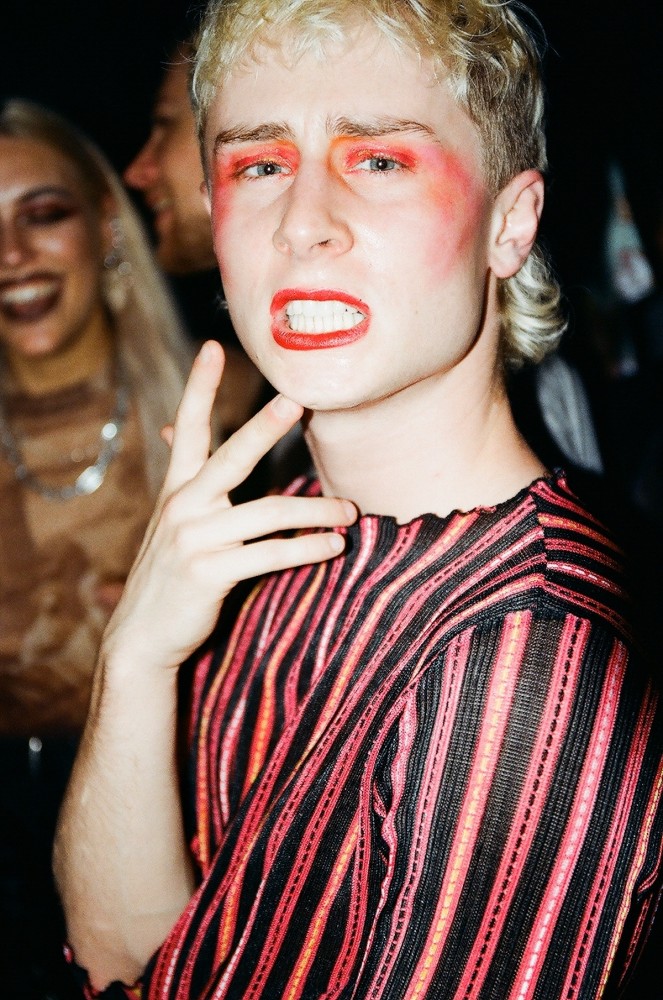
“I definitely think that the female gaze since the rise of Instagram and in photography recently has seen a lot of bubblegum pop and pink candy hearts, Barbie connotations and ‘90s girlhood themes, but personally I am drawn to something a little bit darker and challenging “, said London-based photographer Julia Hovve at the start of our conversation on her latest series BOY, Interrupted.
Julia Hovve is an artist working between London and Berlin, whose practice revolves around exploring the intersections between gender perception, intimacy and subcultures, focusing on deconstructing mainstream visual narratives. Her work has been featured by HERO, i-D, Vogue Italia, ICA and she had work at TATE Modern’s Offprint Festival in 2018.
Hovve’s approach to photography aims to question heteronormative ways of looking , power relations and “societal truism”, by documenting cultures on the fringes.
“I work with the freedom shown in photography that does not exist outside of the lens. The expression that this gives to many people who otherwise feel the pressure to conform, is the channel of freedom that touches my heart” , Hovve highlights in her artist’s bio.

Francesco Ferranti: How did you become fascinated with photography as a medium for storytelling?
Julia Hovve: I love that an image is just this fleeting moment, but it can relate to a whole narrative about the culture, time and space we inhabit collectively. I like the idea of archiving time and of boxing up real moments into something to be considered for so much longer than the actual moment could exist. I imagine the image as a kind of cue to streams of thought, questions and emotions as people look at it. That is what I love about when I am first confronted with a strong image as I develop it. I think I have a nostalgia even in the moment of something happening that capturing with a camera helps to keep at bay.
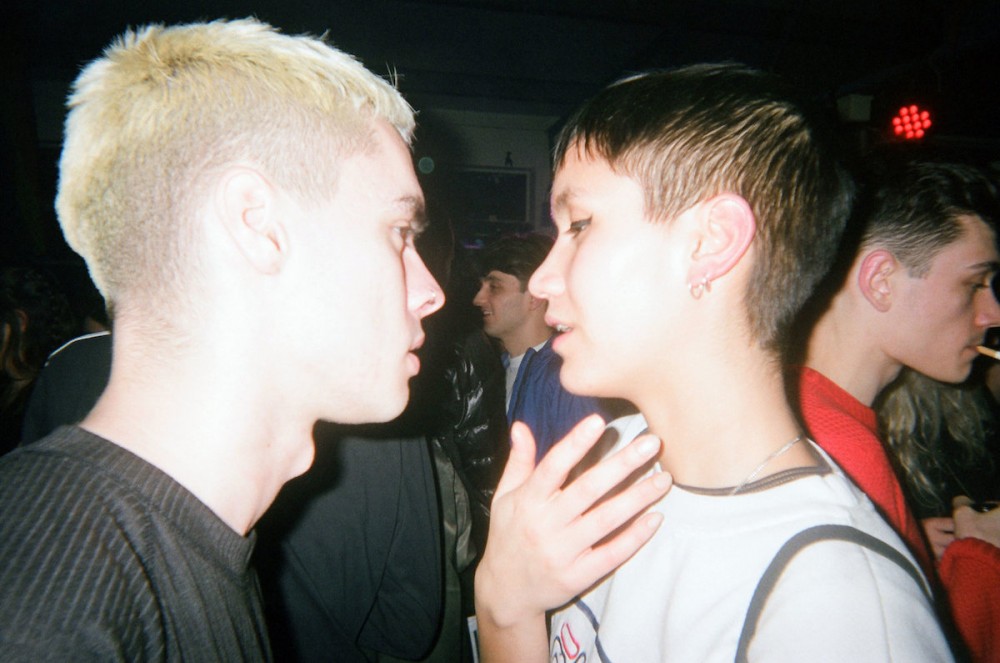
Francesco Ferranti: What are your aesthetic references?
Julia Hovve: Originally, I became interested in photography because of a Martin Parr photo I saw on TV in my early teens – the famous one with the woman looking like a Manet and the boy holding too much ice-cream – and I realized how much an image can actually say, rather than just what I had been exposed to before – framed pictures of friends and family or girls smiling out from covers of teen magazines. I also think I was drawn more towards it as I grew up in a very sudden visually conscious world with the rise of social media sites like Myspace and the idea of projecting an avatar to the world, rather than just existing in one ‘reality’. As I photographed more, I started to take inspiration more from movies – stuff by Larry Clark, Lynne Ramsay and Jim Jarmusch made me consider the ambience of a given photo in a new way.

Francesco Ferranti: Fleeting young bodies, rave culture and subcultures in general seem to be central in your practice. How did these elements filter into your work as a photographer?
Julia Hovve: I was photographing throughout my teens but not nearly as avidly as when I moved to Berlin [at the age of nineteen]. That was where I realised that the snapshots I was taking ‘on the side’ of projects I was kind of forcing into being, were actually the very thing that drove me to fall in love with photography and with people, as a result. The Berlin culture is notoriously free and wild and this cultural ethos was something that touched me so poignantly that I want to encapsulate and drive that message through all my visuals forever.

Francesco Ferranti: Your work explores queer identity and intimacy with a raw and genuine approach- where do you take inspiration from?
Julia Hovve: The element of freedom is so central to my work – I am always thinking about what that ‘is’, what the word can mean, if we ever really have it – collectively and individually – and I think that’s where these elements of rawness and intimacy come in. In terms of queer identity – I believe that that is the true identity and to resist binary norms and hyper-gendering is beneficial and maybe essential to any healthy society. It’s not a new concept when we look back over thousands of years, but it is constantly being stifled, then unearthed, then buried deep again.

Francesco Ferranti: Can you explain the process behind your latest series BOY, Interrupted, which featured my friend Felix Dobson?
Julia Hovve: This was kind of an homage to my time in Berlin. I didn’t realise it at the time, but now I look back, I see that it was a bringing together of my years around these friends, passers by and fleeting encounters that had made Berlin fill me with a sense of the bravery, outrageousness and naughtiness that it encouraged within me too – something I cherish and appreciate. I think BOY, Interrupted was a celebration of that. Felix snuck into the project on a night out during a weekend in Bristol!
Francesco Ferranti: You made an interesting video to go with the project. How was the experience of filming this? I relate a lot to some things that have been said about masculinity, especially the part about self-trust and mental health.
Julia Hovve: I was a little hesitant to film it at first, as I was worried there would be any kind of bridge between my perception of the generic male experience and the experience itself. I am still concerned that I filtered too much of my perception into it but I am very satisfied with it even just for the conversations I had while making it that were had around these issues. Its easy sometimes to blame our issues as women onto men rather than the patriarchy – which is a separate thing and damages us all respectively. I think my thought process behind making the short was to address this broad issue without drawing a narrative conclusion to it.
Taken as a whole, BOY, Interrupted offers an intersectional approach on the female gaze visual language, which can remind the viewers of the practice of artists such as Louise Bourgeois, Orlan, Jenny Saville, Barbara Kruger, Adrian Piper, Sylvia Plath and Jenny Holzer.
Follow Julia’s work on here

